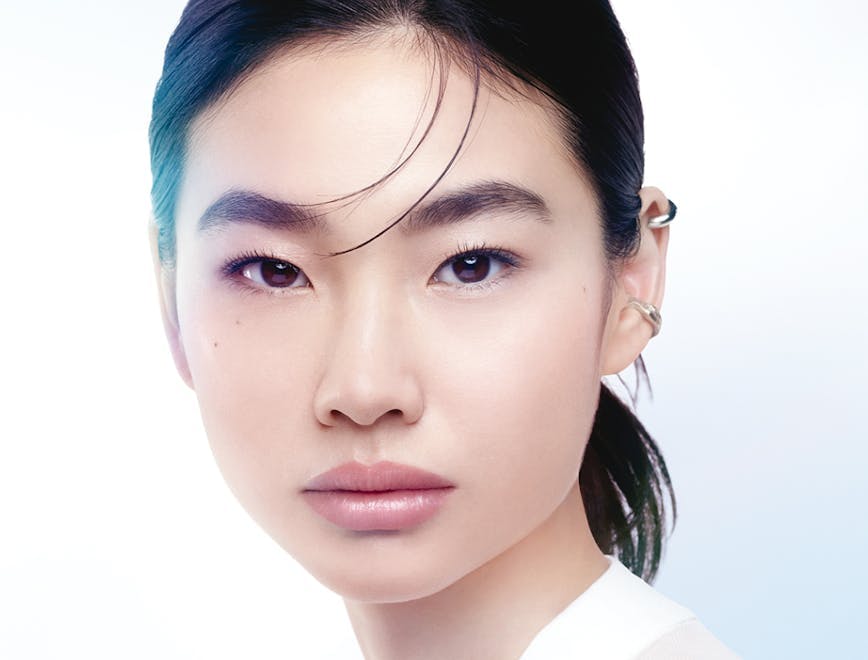Daphné Bugey inspires us with perfumes
L’Officiel speaks with Daphné Bugey on her affinity for fantastical world of perfumery and her latest Dolce&Gabbana Eaux de Parfum Intense scents.
Daphné Bugey, a free spirit with a love of exploring the globe (from mountains to deserts), decided at the young age of 10 that she wanted to be a perfumer. The creation of fragrances that capture intangible emotions and concepts is an incredibly individual endeavour that draws from a wide range of influences. She finds inspiration in nature and lets herself be carried away by the beautiful scents of fruits, flowers, forests, and spices as she draws inspiration for her work. She finds fresh and unusual scents while travelling, which inspires and informs my craft, and her experiences exploring other landscapes and civilizations are equally influential. Moreover, the depth and significance of her works are enhanced by the inspiration she draws from her own emotional ties and recollections. The influence of one’s culinary experiences is also substantial, since the scents and tastes of many cuisines can enhance the olfactory experience of any given scent.
Bugey aims to create fragrances that deeply connect with people by drawing from a wide range of influences; her goal is to have each fragrance bring back strong feelings and memories.
What would you choose to smell if you had a chance to create a perfume to symbolise a certain emotion?
If I had the opportunity to create a perfume to symbolise a feeling, I would choose to capture the essence of joy and vitality. Citrus fragrances would play a central role in this olfactory creation, as they possess a unique ability to invigorate the senses and uplift the mood.
Citrus notes, such as lemon, bergamot, and mandarin, are renowned for their bright and refreshing aroma. Their zesty and vibrant qualities evoke a sense of freshness and energy, instantly awakening the senses and infusing the wearer with a feeling of joy and vitality.
To create one-of-a-kind scents, your fragrances often combine unexpected elements. Could you give us an example of a seemingly improbable combination that ended up being effective?
This would be the pairing of the juicy sweetness of fig with the bold richness of leather in Dolce&Gabbana’s K Intense fragrance. On one hand, fig is typically associated with its creamy sweetness and juicy aroma, evoking images of sun-ripened fruit and lush gardens. It brings a sense of warmth and comfort to a fragrance.
On the other hand, leather is known for its robust and sophisticated character, often conjuring images of luxury and strength. It adds depth and complexity to a scent with its deep, slightly smoky undertones.
There’s a strong correlation between smell and emotional processing and memory. When designing a scent, how do you want to make the person using it think of an experience?
First of all, this process is highly subjective and can vary based on cultural background and individual life experiences. There are certain combinations of carefully selected fragrance notes that have been associated with specific emotions or memories. For example, citrus notes might evoke feelings of freshness and vitality, while warm and spicy notes could evoke a sense of comfort or sensuality.
Additionally, the context in which we experience a scent can significantly influence our perception of it. For instance, wearing a fragrance on a romantic evening may evoke feelings of passion and intimacy, whereas wearing the same fragrance during a stressful workday may inspire feelings of relaxation and escape.
One of the great things about being a perfumer is the power to take people back to different places and times. What period would you pick and how would you go about doing it?
If given the opportunity to encapsulate a historical era in a scent, I would choose the Renaissance period in Florence, particularly during the cultural zenith under Catherine de’ Medici's influence. This era’s unparalleled artistic creativity, cultural renaissance, and lavish splendour make it an ideal muse for fragrance creation.
To encapsulate the essence of Renaissance Florence, I would craft a fragrance blend that mirrors the opulence and sophistication of the era. Floral notes such as jasmine and rose would form the heart of the fragrance, evoking the lush gardens and verdant landscapes that adorned the city. Aromatic herbs like basil would harmonise with these floral accords, symbolising the abundance of botanicals and fragrant gardens that flourished during this period of cultural efflorescence.
To impart depth and richness to the scent, I would infuse woody and resinous notes such as cedarwood, frankincense, and myrrh. These ingredients would evoke the grandeur of Renaissance palaces, the ornate interiors of churches, and the opulent furnishings that adorned the city’s aristocratic households, imparting a sense of regal elegance and majesty to the fragrance.
The fragrance industry is becoming more and more concerned about sustainability and environmental issues. What measures do you take to guarantee that your scents are eco-friendly, and how do you integrate these ideas into your creative process?
I am truly fortunate to work with the DSM-Firmenich palette, which offers a wide range of eco-friendly raw materials. These include sustainably sourced naturals with strong local partnerships, as well as white biotech molecules created using green chemistry principles.
At DSM-Firmenich, we could work with raw materials that have minimal environmental impact while still delivering high-quality fragrance experiences. Additionally, we continuously explore new innovations and advancements to further improve the sustainability and lower the footprint of our formulations.
How would you describe the Dolce&Gabbana K & Q Eaux de Parfum Intense fragrances?
In three words: captivating, sophisticated and sexy.
What inspires the K & Q Eaux de Parfum Intense fragrances – and what olfactory elements did you incorporate into them to capture the inspiration?
For K Intense, I sought to capture the essence of masculinity, incorporating warm saffron, cardamom, and luminous citrus notes to create a bold and inviting opening. Rich leather accord, intertwined with creamy fig and earthy vetiver, adds depth and complexity, evoking a sense of bold confidence.
Meanwhile, Q Intense draws inspiration from sensual femininity, with Sicilian lemon and jasmine sambac absolute infusing vibrancy into the signature cherry note. Beautiful ambery tones in the dry down create a warm and captivating trail, enveloping the wearer in an aura of opulence.
Together, these olfactory elements work harmoniously to embody the spirit of Dolce & Gabbana's iconic K&Q fragrances in their intensified forms.
There is a great deal of heritage and history in the perfume industry. While preserving the art of perfumery’s rich history, how can one forge ahead with fresh scents that capture the essence of the present?
It’s crucial to respect the foundations of perfumery, understanding the techniques, ingredients, and artistic principles that have shaped the industry over centuries. Once perfumers understand and respect this historical context, they can then explore new interpretations and perspectives that resonate with the present moment. This may involve experimenting with innovative ingredients, techniques, and cultural influences while remaining mindful of contemporary trends and preferences. Additionally, looking towards the future allows perfumers to anticipate evolving tastes and values, ensuring that their creations remain relevant and forward-thinking. Ultimately, by embracing both the past and the present while keeping an eye on the future, perfumers can craft scents that honour tradition while capturing the essence of the modern world.
Available at all major department stores nationwide.










